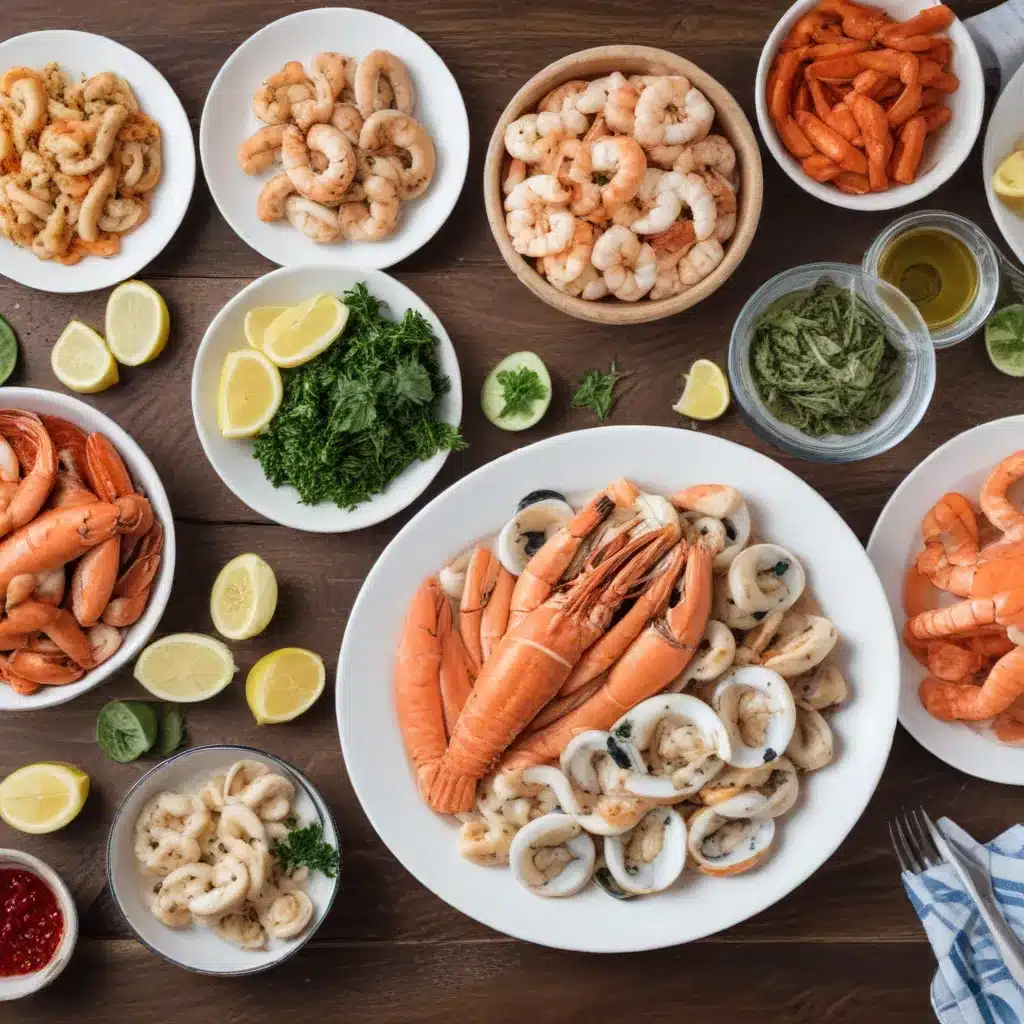
Living with a seafood allergy is an ever-present reality for millions of people. Whether you’re dining out, traveling, or preparing meals at home, a single exposure to the wrong type of shellfish or finfish could trigger a potentially life-threatening allergic reaction. However, with the right knowledge and precautions, you can safely navigate the world of seafood and enjoy all the benefits it has to offer.
Types of Seafood Allergies
Seafood allergies generally fall into two categories: crustacean allergies (like shrimp, crab, and lobster) and mollusk allergies (such as clams, oysters, and squid). While it’s possible to be allergic to only one type, many people with a seafood allergy must avoid both crustaceans and mollusks.
The most common seafood allergens are proteins like tropomyosin, parvalbumin, and arginine kinase. These can trigger a range of symptoms, from mild hives and digestive issues to the life-threatening condition known as anaphylaxis. The severity of the reaction can vary greatly from person to person and even from one exposure to the next.
Dining Out with a Seafood Allergy
Eating out can be a minefield for those with seafood allergies, but it doesn’t have to be. The key is to establish clear communication with the restaurant staff and make informed choices about the menu.
When dining at a restaurant, start by speaking with the manager or chef about your allergy. Explain the importance of avoiding any and all seafood, and ask them to take special precautions during food preparation. Inquire about the restaurant’s policies for handling food allergies, and don’t hesitate to request a dedicated cooking area or clean utensils.
When scanning the menu, look for dishes with simple, clear ingredients. Avoid anything that may contain stock, sauces, or seasonings made with seafood. Many establishments now label allergens on their menus, making it easier to identify safe options. If you’re unsure about a particular dish, don’t be afraid to ask for clarification.
Seafood Allergy Management at Home
Navigating seafood allergies in your own kitchen may seem daunting, but with the right strategies, you can prepare delicious and safe meals. Start by closely reading ingredient labels on all packaged foods, looking out for hidden seafood-derived components like fish sauce, shrimp paste, or surimi (imitation crab).
Be vigilant about cross-contamination risks, such as using the same cutting board or utensils for seafood and non-seafood items. Thoroughly clean all surfaces, pots, and pans before cooking your allergy-friendly meal. Consider designating certain kitchen equipment solely for seafood-free preparation.
Seafood Allergy Testing and Diagnosis
If you suspect a seafood allergy, the first step is to consult with a board-certified allergist. They can perform skin prick tests or blood tests to confirm the allergy and identify the specific culprit proteins. Knowing the precise nature of your seafood allergy will help you make informed decisions about which foods to avoid.
Your allergist may also recommend an oral food challenge, where you’ll be gradually exposed to small amounts of the suspected allergen under medical supervision. This can help determine the severity of your reaction and guide your ongoing management.
Seafood Allergy and Travel
Navigating seafood allergies while traveling can be particularly challenging, but with some advance planning, you can enjoy a worry-free trip. When flying, be sure to inform the airline of your allergy and inquire about their policies regarding in-flight meals and snacks. Many carriers now offer nut-free or seafood-free options upon request.
For international travel, research the local cuisine and food labeling laws ahead of time. Carry allergy-friendly snacks and be prepared to communicate your dietary needs to restaurant staff, hotel concierges, and tour guides. Don’t forget to pack your epinephrine auto-injector and any other necessary medications.
Seafood Allergy in Children
Managing a child’s seafood allergy requires a collaborative effort between parents, caregivers, and the school community. As children grow and become more independent, it’s important to teach them age-appropriate self-management skills, such as reading ingredient labels and advocating for their needs.
Work closely with your child’s teachers, nurses, and administrators to ensure a safe and inclusive environment. Provide the school with an Allergy and Anaphylaxis Emergency Plan, detailing the symptoms of a reaction and the proper steps to take in an emergency. Consider volunteering to educate classmates about food allergies and promote a culture of understanding and acceptance.
Seafood Allergy and Nutrition
Avoiding seafood can present some nutritional challenges, particularly when it comes to obtaining adequate protein, omega-3 fatty acids, and other key nutrients. Fortunately, there are plenty of alternative protein sources, such as beans, lentils, tofu, and nuts, that can help fill the void.
Be mindful of hidden seafood ingredients in processed foods, and work with a registered dietitian to develop a balanced, allergy-friendly meal plan. With a little creativity and planning, you can enjoy delicious and nutritious meals that cater to your seafood allergy.
Seafood Allergy and Lifestyle Adjustments
Living with a seafood allergy requires constant vigilance and can sometimes feel isolating. However, by surrounding yourself with a strong support system and advocating for your needs, you can maintain a fulfilling and enjoyable lifestyle.
When attending social events or celebrations, communicate your allergy upfront and work with the host to ensure there are safe food options available. Don’t be afraid to politely decline dishes you’re unsure about or to bring your own allergy-friendly dish to share.
Remember, your mental and emotional well-being are just as important as your physical health. Seek out support groups or counseling if you’re struggling with the stress or anxiety of managing your seafood allergy. And remember, you’re not alone – there are countless others navigating this journey alongside you.
By staying informed, communicating openly, and advocating for your needs, you can safely and confidently enjoy the many pleasures of seafood – whether it’s a gourmet meal at your favorite restaurant or a simple summer barbecue. With the right precautions and a little creativity, the world of seafood can be yours to explore.

